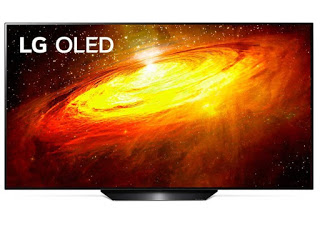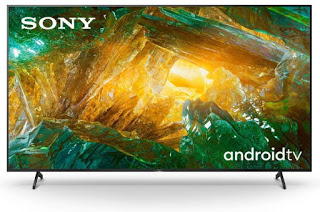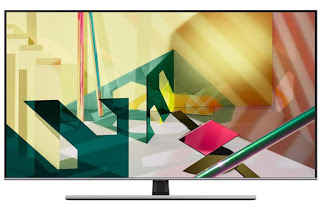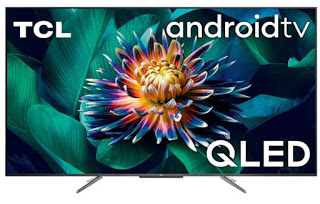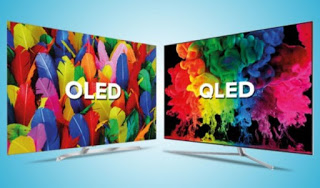 When we enter the electronics store to buy a new Smart TV in most cases we will find two acronyms in the technical data sheets: YOU ARE e QLED. Even if on paper they seem similar technologies, in reality, these two acronyms identify two distinct and separate technologies for the panels that make up the visual part of the television (ie the one that reproduces the transmitted images).
When we enter the electronics store to buy a new Smart TV in most cases we will find two acronyms in the technical data sheets: YOU ARE e QLED. Even if on paper they seem similar technologies, in reality, these two acronyms identify two distinct and separate technologies for the panels that make up the visual part of the television (ie the one that reproduces the transmitted images).If we too were left with some doubts about these acronyms, we came across the right guide: below we will illustrate, in simple words, what does OLED and QLED mean and what is currently the best technology when we talk about high-end or premium TVs (with costs almost always above 1000 €). Obviously for each technology covered we will also show you some models of Smart TV that we can consider, so you can immediately proceed with the online purchase on Amazon (where there is always a saving compared to the physical store or shopping center).
READ ALSO: How to choose and buy the best Smart TV
Which TV panel to choose
In the following chapters, we will first show you the differences between the two technologies mentioned in the introduction of the article and, like any good self-respecting guide, we will find our buying guide where it will be possible to view televisions for each technology mentioned so that we can always choose the model that best suits our needs.
Differences between OLED and QLED
The differences between the two types of panels are structural and difficult to overlap, even if at first glance they seem to be similar in name.
OLED panels are composed of organic type LED diodes able to emit their own light, without the need for a backlight panel: in fact, all the colors of the image (RGB) and the white points are managed by organic LEDs pixel by pixel. The first advantage is there for all to see: when an OLED pixel is black is really “black”, since there is no light panel behind it to filter. It is no coincidence that OLEDs allow you to get really deep blacks and contrasts without using dynamic contrast software. On the other hand, however, the brightness of the OLEDs is not high and, on very lively scenes, they can suffer from an unpleasant wake effect (compensable via software).
QLED panels are very similar to LCD panels sold so far, but with one substantial difference: the backlight panel is made up of many quantum dot LEDs (Quantum Dot). This technology allows to obtain a wider range of colors than OLEDs and a very high brightness (even double that of OLEDs), without distorting the contrast and black level too much (on some high-end models it is almost at the levels of OLEDs). . As defects we find a slightly higher current consumption, a high brightness that can annoy (but can always be adjusted), and a black that is not always perfect, especially if no system is applied. local dimming O micro dimming by the manufacturer (i.e. those technologies that turn off the LEDs not used when we reproduce black areas).
On balance there is no real winner: each technology has its pros and cons, so we will have to be good at choosing the one that best suits our living room and our lighting conditions, as also seen in the article How far to view a TV or monitor based on the screen size.
Buying Guide
In this chapter, we will try to show you the best TV models for both types of technology so that you can compare the recommended models with those visible in a store or mall (where the visual impact can be decisive for the purchase).
If we want to focus on an OLED TV that we advise you to view is the LG OLED TV AI ThinQ OLED55BX6LB, available on Amazon for € 1900.
On this Smart TV, we find a 65-inch OLED panel, 4K UHD resolution, HDR support, α7 Gen3 processor with Dolby Vision, audio with IQ / Dolby Atmos support, compatibility with the NVIDIA G-Sync video synchronization system, dedicated WebOS operating system ThingQ, Wi-Fi connection, Bluetooth, and support for Google Assistant and Alexa voice assistants.
Another good OLED TV we can focus on with our eyes closed is the Sony KD75XH8096PBAEP, available on Amazon for less than 2000 €.
On this Smart TV, we find a 75-inch OLED panel, 4K UHD resolution, HDR support, 4K X-Reality Pro processor, Android TV operating system, Wi-Fi connection, Bluetooth, and support for the most famous voice assistants.
If instead, we wanted to focus on QLED technology we advise you to consider the Samsung Serie Q70T, available on Amazon for less than 2000 €.
On this TV we find a 75-inch QLED panel, 4K UHD resolution, Quantum HDR support, Quantum Dot processor, local dimming system, Wi-Fi connection, Bluetooth, and dedicated operating system (compatible with all the most famous apps).
If, on the other hand, we wanted a low-end QLED TV we can focus on the TV TCL 50C711, available on Amazon for less than 600 €.
This stunning TV boasts a 50-inch QLED panel, 4K resolution, HDR 10+ system, Micro dimming lighting, Dolby Vision sound system, Dolby Atmos support, Hands-Free Voice control, and Android operating system.
Conclusions
Obviously, like all great technological comparisons, there is no absolute winner: if we love to watch many films and TV series in the evening or in the dark it is preferable to focus on OLEDs (with really beautiful and deep blacks), while if we watch TV in a room bright, it is better to focus on high-end QLEDs, so as to be able to capture every color and every detail at the highest quality.
To be sure to always buy the best Smart TV for our needs and to buy in the right place and if it is better to buy TV online or in a store.
If instead, we want to deepen the discussion on operating systems for Smart TV and choose the best system, we suggest you read the articles What does Smart TV mean, what are the advantages and disadvantages e Best Smart TV for app system from Samsung, Sony, and LG.


